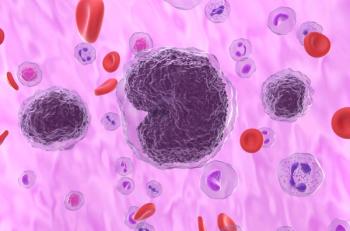
Study Identifies Patient Assessments Useful for Adolescents With Alopecia Areata
A recent study found that patient assessments of symptoms are fit for purpose and can be used by adolescents with alopecia areata in clinical trials and practice.
A cross-sectional, noninterventional, qualitative study published in the
The researchers interviewed 11 adolescents for this study. All had greater than or equal to 50% scalp hair loss presently or in the past, and the adolescents had a mean (SD) age of 15.0 (1.5) years, had been diagnosed with AA for a mean of 5.9 (4.0) years, and had a mean of 69.6% (38.3%) scalp hair loss. At the time of the interview, 45% of participants were receiving treatment for AA.
Adolescents reported that scalp hair loss was the most bothersome symptom of AA for them, with more female than male participants (6 vs 1, respectively) rating scalp hair loss as most bothersome.
Participants described their current or previous amount of scalp hair qualitatively or as a percentage or fraction. There were 6 participants who did not think of the amount of hair that they had as a percentage, preferring qualitative means of explanation. All participants demonstrated an understanding of percentages, although 2 incorrectly guessed the percentage of hair that they had compared with their doctor’s assessment.
Participants reported that a median 80% of scalp hair coverage would be clinically meaningful and an indicator of treatment success after 9 to 12 months. All adolescents could provide responses to the Scalp Hair Assessment and understood the instructions for assessment.
All 11 participants were able to provide percentages of missing hair for each severity category, with 7 who found the task easy and 3 who expressed some confusion before understanding after a brief explanation. Most of the participants (7 of 10) preferred the measure with percentages whereas the remaining 3 preferred using descriptors. All participants thought they accurately rated their hair loss but deferred to doctor assessments.
All 11 adolescents understood and provided responses to the PRO Measure for Eyebrows, PRO Measure for Eyelashes, and PRO Measure for Nail Appearance with only minor problems reported. The photoguide for the assessment of nail appearance was helpful in providing an explanation for different nail damage descriptors.
Participants were confident in their ratings but felt a doctor’s rating would also be needed in a clinical trial, as the doctor would be most informed. The PRO Measure of Eye Irritation was similarly easy to understand for the participants.
There were some limitations to this study. The study was conducted only in the United States and may not be generalizable. The small sample size did not permit analysis of the data or the ability to draw conclusions based on age or sex. The adolescents may have been exposed to PRO tests prior. Some participants’ hair loss was assessed just prior to their interview, which may have influenced perceived hair loss.
The researchers concluded that the Scalp Hair Assessment PRO, PRO Measure for Eyebrows, PRO Measure for Eyelashes, PRO Measure for Nail Appearance and PRO Measure for Eye Irritation were assessments that could be used by adolescents with AA in clinical trials and clinical practice, subject to further psychometric evaluation.
Reference
Macey J, Kitchen H, Aldhouse NVJ, et al. A qualitative interview study to explore adolescents’ experience of alopecia areata and the content validity of sign/symptom patient-reported outcome measures. Br J Dermatol. 2022;186:849-860. doi:10.1111/bjd.20904
Newsletter
Stay ahead of policy, cost, and value—subscribe to AJMC for expert insights at the intersection of clinical care and health economics.













































